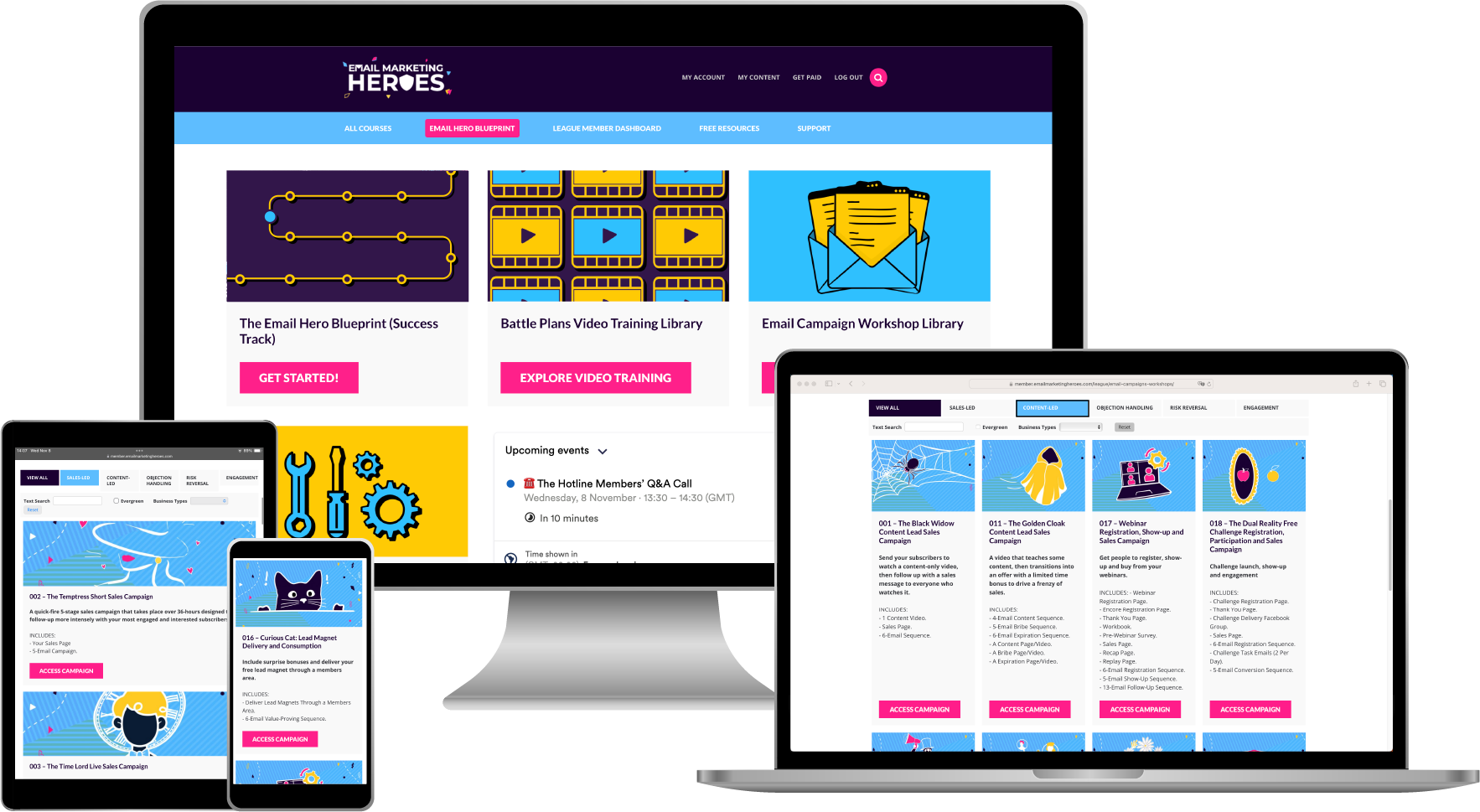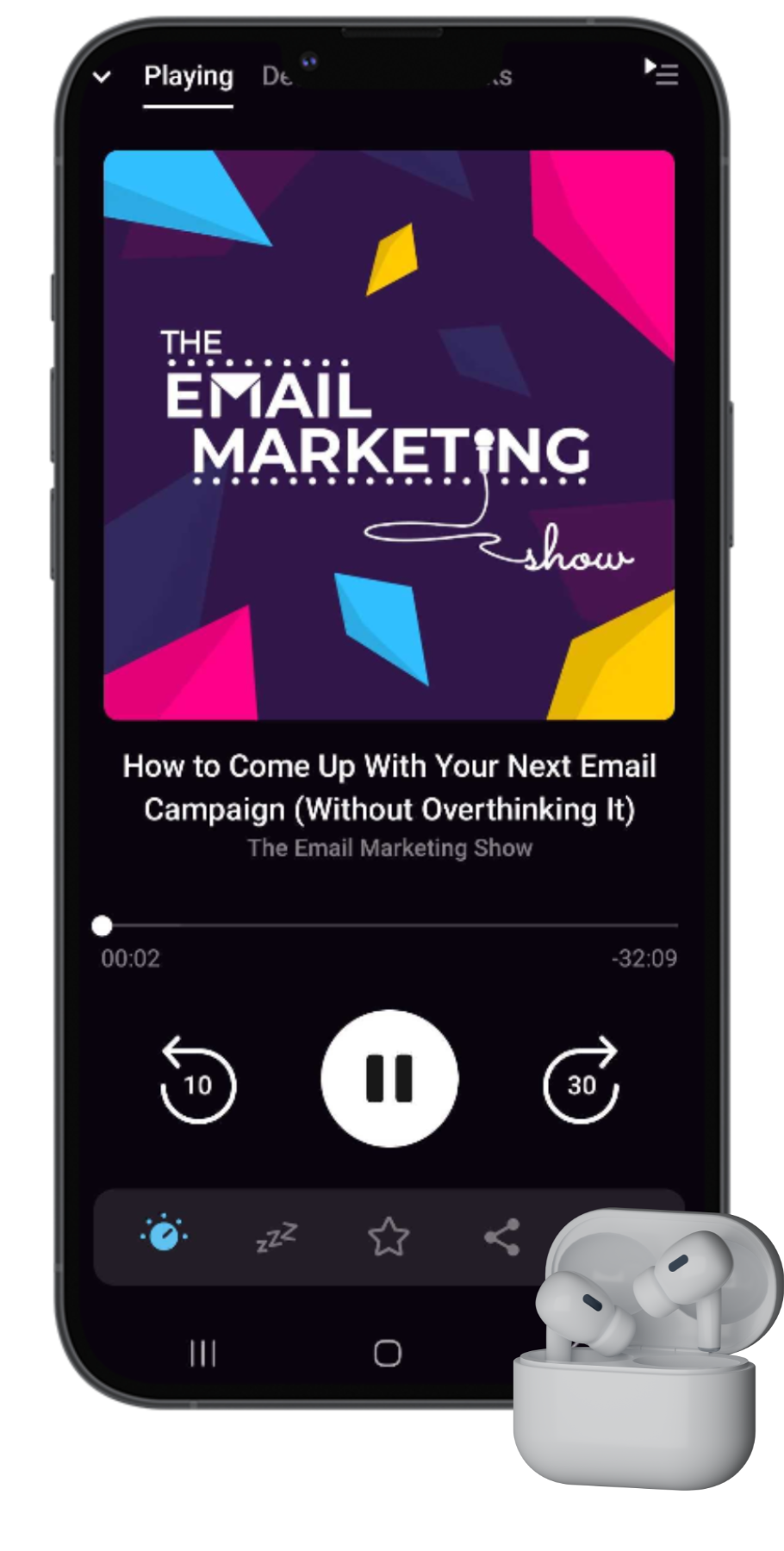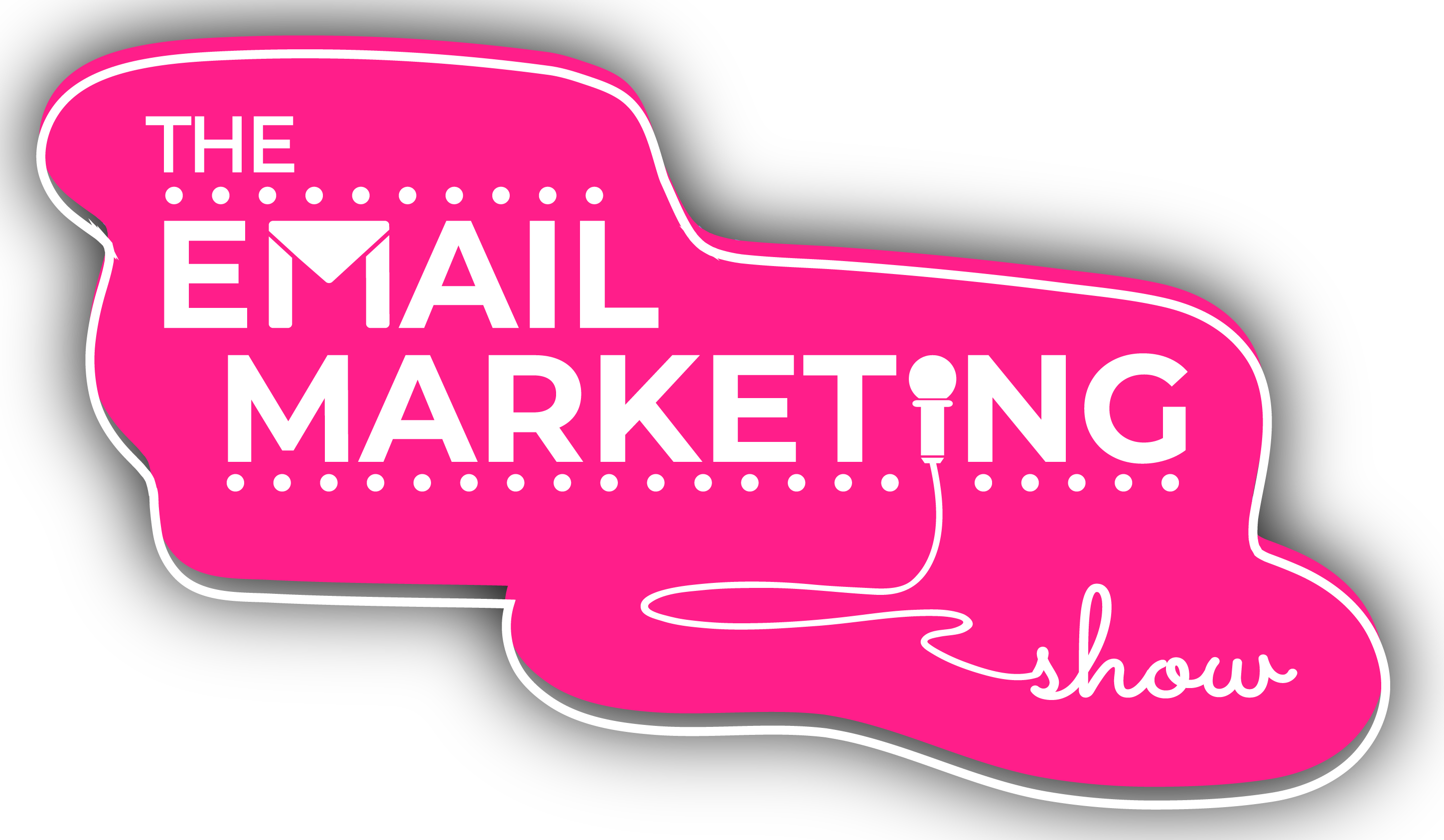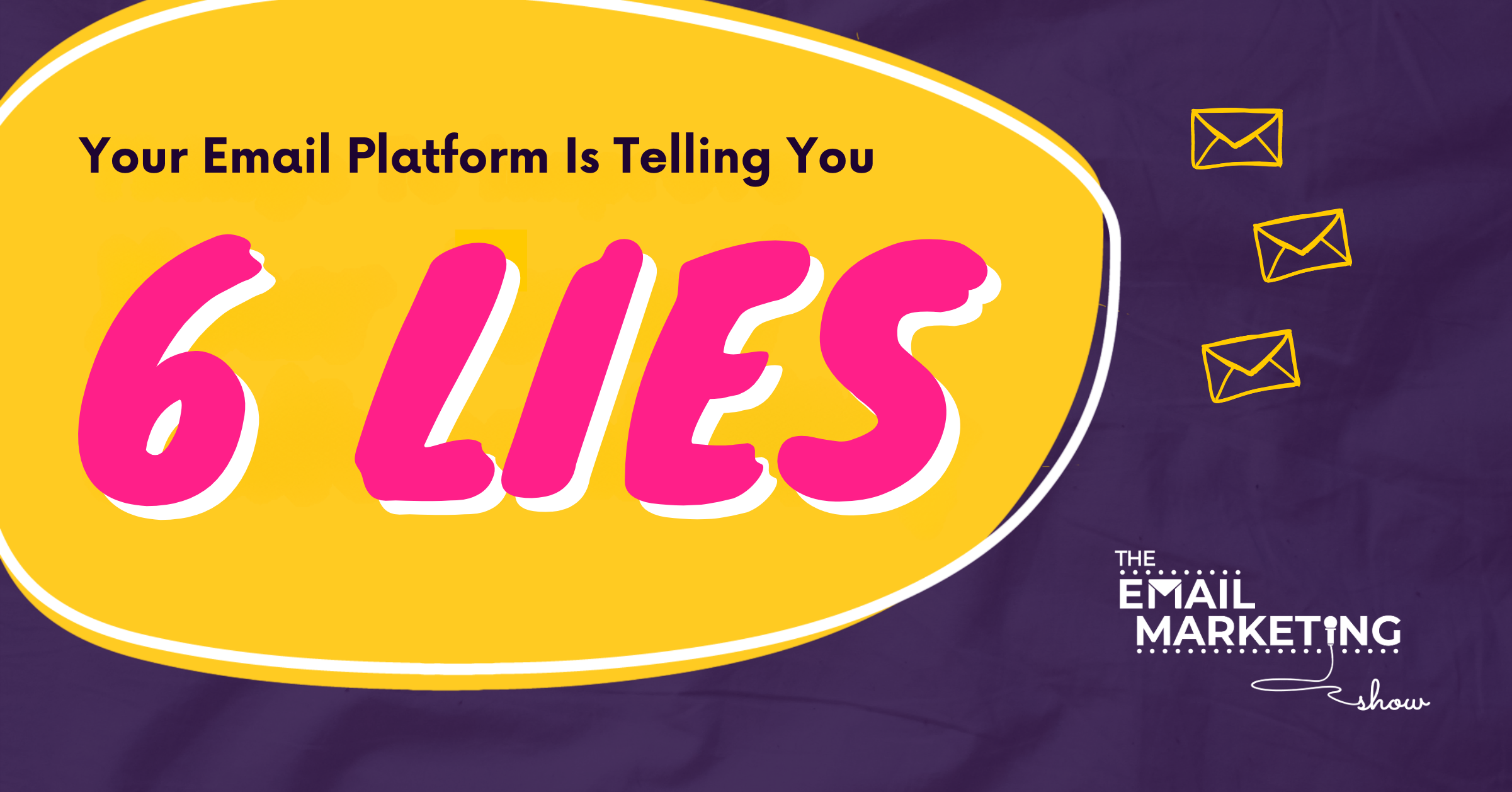
Warning: 6 Lies Your Email Marketing Platform Is Telling You
Welcome to another episode of The Email Marketing Show!
We’re Kennedy and Fifi, and this week, we’re exposing six lies your email marketing platform might be feeding you – and what to pay attention to instead.
Want to get more sales from your email marketing?
Before we get started with today’s episode, we’ve put a little something together for you.
It's really cool and it's FREE (yes, it's cool and free – we're nice like that). Until you're making a consistent $10,000 per month in your business, it can feel like you're riding peaks and troughs and feel stuck in the weeds of your business.
That's why we've created this on-demand training to show you the easiest and most predictable way to hit consistent $10k months from your EXISTING audience. You can watch it here.
1. Re-sending to unopened
The first thing we want to talk about is the big button that gives you the ability to re-send an email to the people who didn’t open it the first time you sent it. It’s called re-send to unopened, and it’s a horrendous idea.
First of all, thanks to Apple and Android, email marketing platforms can't track opens accurately. We cannot rely on opens because Android will say everything is not opened and Apple says everything is! So if you re-send your emails to the people your system thinks haven’t opened them, there’s a good chance you’re getting it all wrong.
The second reason why you don't want to re-send emails to people who haven't opened them is that it impacts your deliverability. If the email didn't get opened last time, banging people over the head with it isn't going to help you!
And finally, there's a psychological reason why this isn't good. Each of us opens and engages with emails for different reasons. You might get an email from us and want to open it because you’re interested in the subject line. But the next day you might not care about the new subject line. So if an email didn’t work for you yesterday, it’s still not going to work for you today. You're better off crafting a brand new email with a new subject line.
Re-sending to unopened is lazy, it affects deliverability, it’s hurting your reputation, and it’s not going to get you results.
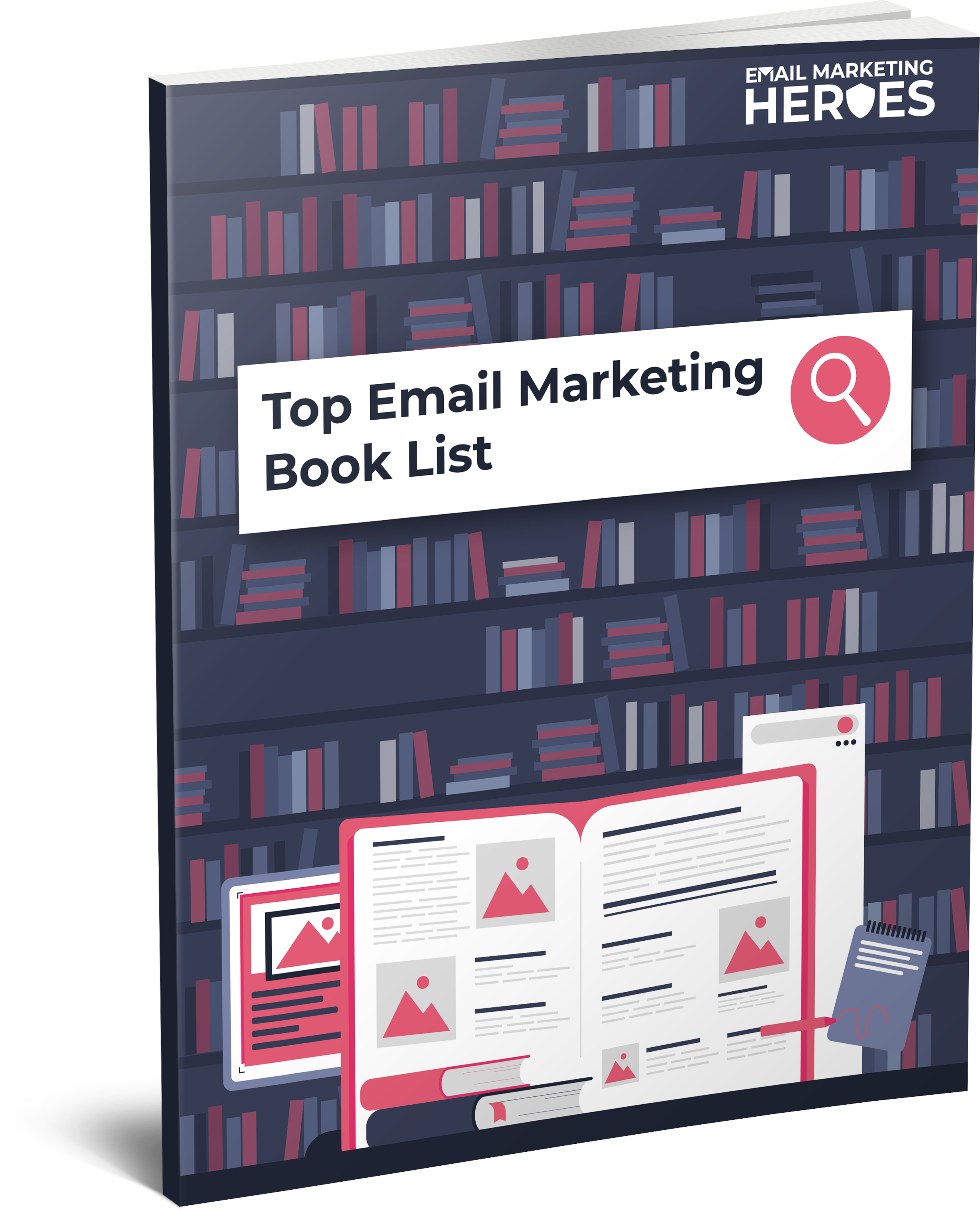
The Top 10 Books To 'Power Up' Your Email Marketing
10 book recommendations that will improve all areas of your email marketing (including some underground treasures that we stumbled upon which have been game-changing for us).
2. Paying attention to open rates
The next ‘lie' email platforms are telling you is drawing your attention to open rates. These are the biggest numbers in your email platform and one of the first things you see when you look at your dashboard. And metrics are important – we should all be paying attention to the metrics in our business. But open rates aren’t one of them.
Yes, the fact that email marketing platforms still track them is useful. Because even though they're wrong, today’s open rates are still relative to yesterday’s and tomorrow’s. If today’s open rate is higher than yesterday's, that’s probably true – even if the exact number is incorrect. So by all means, take a look at the growth or decline of your open rates over time, but don't pay attention to the actual number because that's irrelevant.
Instead, we suggest you focus on your conversions (eg. how many people bought the offer) and your email engagement (eg. click rates). Because those are accurate numbers.
3. Using templates
Another feature that email marketing platforms love presenting users with is the list of templates you can choose from when creating your emails. You have coloured backgrounds, space for images and logos, and a range of different sections. But you don’t need to use any of these fancy templates that make your emails look like the school newsletter. That’s not what great emails look like!
In fact, you want your emails to look as close as possible to what you would send if you opened Gmail right now and sent an email to somebody. The less images the email has, the less chances of it getting clogged up in sensitive spam traps and filters. Also, having pictures and different sections in the email template is an indication you're changing topics. And that means you could write separate emails instead. So if you wish you had more content to share, there's your answer right there – break those longer emails into separate ones.
Also, every time you start a new section, that’s a subconscious signal you’re sending to your reader that they can stop reading now. You’re showing them the exit door when they’re still browsing around the shop. And you'd never do that in real life, right?
So don't use the fancy templates your email marketing platform presents you with. Those emails take longer to put together, and when they don't load properly, they also look terrible on people’s devices. Instead, just use a blank template with your signature in your footer. That's perfect for those situations when you accidentally send an email ahead of time. Plus, it makes your emails faster to write and gets you better readership for them too.
The exception? If your brand runs a regular newsletter, a consistent, branded template might make sense.
4. Using your company name as the email sender
When you receive an email, what’s the first thing you notice?
Another thing that email marketing platforms do in an attempt to be helpful is to pre-populate the ‘from' name with your company name. Because that's often what you provide when you sign up for the email marketing platform. Using your business name as the sender of your emails is the easiest and fastest thing to do. But it’s not the best thing to do from your subscribers’ perspective.
Instead, you want to email from yourself or a person within your business and in your team. Most of our emails come from Kennedy // Email Marketing Heroes. And that’s better than it just being ‘Kennedy' because people wouldn’t know which Kennedy is sending an email. And it’s also better than it being ‘Email Marketing Heroes' because people don't connect with that. People don't want to receive your company literature. They want to receive the stories, the personality, the humour, and the style of the person in the business.
So find someone in your team to be the ‘from' name and make that followed by // Your Company Name. That way your subscribers know who you are and what you do.
For example, we send our emails from “Kennedy // Email Marketing Heroes” instead of just “Email Marketing Heroes.”
5. Writing your subject line first
Another thing that frustrates us is that email marketing platforms ask you to fill in the subject line of an email first.
Whereas we think the easiest way to write subject lines is to do it once you’ve written the email. That way, you can pick out the interesting elements from it, like a phrase you used in the email. So we advise that when you write your emails you use a sample subject line and then go back and edit that after you've written your email.
Trying to write your subject line first without having written the email is hard. Even if you had a clever idea for a subject line, when you’re writing the email you might end up moving away from that. And making the email fit the subject line is hard! Quite often you'll find that as you're writing the email, it takes longer. And that's because your natural writing is steering away from that subject line you picked.
Or you might realise you’ve written a different email to that subject line, so you either have to drag the email back to the subject line (and sacrifice the flow) or change the subject line. So just write the subject line at the end.
Plus, as we always say, getting started with writing a subject line from scratch is hard! You’re adding weight and resistance to the process of writing your emails. You’re putting the handbrake on in your mind. And that’s delaying you or stopping you from writing. Instead, if you're using our Story, Lesson, Offer framework, focus on the story and not on the technicalities around the email. This reduces the number of mental calories required to get the email done.
REMEMBER: Email First, Subject Line Last.
6. Emailing ALL your subscribers ALL of the time
One size does not fit all.
The last behaviour we think email marketing platforms are encouraging because of the way they’re set up is to email all of your subscribers all of the time. That means selecting your whole list, writing an email, and sending it to everyone. You shouldn’t do that.
Instead, you should pay attention to who’s super engaged and email them more often. And equally, you should email the people who are less engaged less often, if at all. You want to divide your subscribers into different segments based on their interests, on how recently they purchased, and on what they purchase from you, for example.
We are constantly excluding people from certain emails we're sending because they might have already seen a particular email or don't need to see a specific piece of content we're sending out. That’s why we use dynamic campaign ideas that we share inside of The Email Hero Blueprint for our members to help route subscribers down different paths. You want to take people around different corners and ensure you're constantly referring them to what's most relevant to them. If somebody clicks to look at a particular piece of content, you might to want to move them into a specific campaign. But you won’t get the same results if you just email your whole list with the same content – it doesn’t work like that anymore.
Also, another reason to exclude people is if they’re already in the middle of something else. They might be in your re-engagement sequence, for example. So if they’re already going through a specific campaign, you might choose not to send them another one. If you think about your email marketing from the subscriber’s experience, you can then decide what they see next.
Subject line of the week
This week’s standout subject line is “What do THESE people want?”
The idea behind this subject line is to tap into curiosity and leverage the emotional engagement of your subscribers. The phrasing uses a common, conversational expression of frustration or intrigue, like when someone knocks at your door and you wonder, “What do they want?” This familiarity helps grab attention in your subscriber's inbox.
While the subject line hints at frustration, the underlying principle is that subject lines evoking strong emotions, whether positive or negative, tend to perform better.
Useful Episode Resources
Related episodes
How to Come Up With Your Next Email Campaign (Without Overthinking It)
The Surprising Thing That REALLY Impacts Your Email Deliverability.
Why You Need to Avoid These Email Marketing Mistakes.
FREE list of the top 10 books to improve your email marketing
If you want to write better emails, come up with better content, and move your readers to click and buy, here's how. We put together this list of our Top 10 most highly recommended books that will improve all areas of your email marketing (including some underground treasures that we happened upon, which have been game-changing for us). Grab your FREE list here.
Join our FREE Facebook group
If you want to chat about how you can maximise the value of your email list and make more money from every subscriber, we can help! We know your business is different, so come and hang out in our FREE Facebook group, the Email Marketing Show Community for Course Creators and Coaches. We share a lot of training and resources, and you can talk about what you're up to.
Try ResponseSuite for $1
This week's episode is sponsored by ResponseSuite.com, the survey quiz and application form tool that we created specifically for small businesses like you to integrate with your marketing systems to segment your subscribers and make more sales. Try it out for 14 days for just $1.
Join The Email Hero Blueprint
Want more? Let's say you're a course creator, membership site owner, coach, author, or expert and want to learn about the ethical psychology-based email marketing that turns 60-80% more of your newsletter subscribers into customers (within 60 days). If that's you, then The Email Hero Blueprint is for you.
This is hands down the most predictable, plug-and-play way to double your earnings per email subscriber. It allows you to generate a consistent sales flow without launching another product, service, or offer. Best news yet? You won't have to rely on copywriting, slimy persuasion, NLP, or ‘better' subject lines.
Want to connect with Fifi?
Fifi is a personal brand and visibility coach who works primarily with introverted coaches and impact makers. She helps quieter people – those who have ideas they want to share with the world but struggle to put them out there. Fifi empowers them to find a way to share in a way that aligns with who they are. You can find Fifi on her website.
Subscribe and review The Email Marketing Show podcast
Thanks so much for tuning into the podcast! If you enjoyed this episode (all about the lies that the email marketing platforms are telling you) and love the show, we'd really appreciate you subscribing and leaving us a review of the show on your favourite podcast player.
Not only does it let us know you're out there listening, but your feedback helps us to keep creating the most useful episodes so more awesome people like you can discover the podcast.
And please do tell us! If you don't spend time on email marketing, what do you really fill your working days with? We'd love to know!

